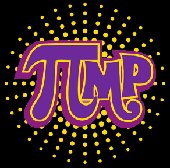Copyright Law Part 6 - Appendix
by Terry Carroll
APPENDIX: A note about legal citation form, or, "What's all this
'17 U.S.C. 107' and.'977 F.2d 1510' stuff?"
Citations to legal materials can be intimidating when first
encountered. The purpose of this entry is to provide a short
description of the legal citations used in this article to reduce
that intimidation. It's not intended as a be-all and end-all to
legal research, but just a way of letting you find the sources
that are cited in this FAQ if you head to a law library. If you
don't care about looking up any of the legal materials cited in
this FAQ, skip this entry.
CASES: Cases are reported in books called "reporters." A
reporter generally consists of a series of bound volumes. Often
when the volume number becomes too high, the reporter publisher
starts over with volume 1, designating the new set as a "second
series," "third series," etc., as appropriate.
Because copyright is almost entirely a matter of federal law, most
(if not all) cases referenced in this FAQ are federal cases. The
most common reporters (with their abbreviations shown in
parentheses) are:
United States Reports (U.S.) - This is the official reporter for
cases from the United States Supreme Court. This is the standard
reporter reference provided when referencing a Supreme Court case.
If a case is especially recent, it may not yet be published in the
U.S. Reports, in which case, the proper reference is to one of the
unofficial reporters (either the Supreme Court Reporter or the
Lawyers' Edition).
The unofficial reporters are also cross-indexed by the U.S.
Report's volume and page numbers, so that given a citation to a
case in the U.S. Reports, you should be able to also find it in
either of the unofficial reporters. The converse is not true: if,
for example, you have a citation to the Supreme Court Reporter,
you will not be able to find the case in the U.S. Reports. All
law libraries carry a set of books called Shepard's Citations,
which will permit you to cross-reference this way. See your law
librarian for help using these intimidating-looking books.
Supreme Court Reporter (S.Ct.) - This is an unofficial reporter
published by West Publishing. It too reports cases from the
United States Supreme Court. The advantages of this reporter is
that it comes out more quickly than the official reporter, and
also includes West's headnotes and case summaries.
United States Supreme Court Reporter, Lawyers' Edition (L.Ed.) -
This is another unofficial reporter, similar to the Supreme Court
Reporter, but published by the Lawyers Cooperative Publishing Co.
In addition to the advantages offered by the Supreme Court
Reporter, it often includes short essays (called annotations) on
points of law dealt with in a case.
Federal Reporter (F.) - This is an unofficial reporter, published
by West, that reports cases from the various United States Courts
of Appeal. There is no official reporter for these cases, and the
Federal Reporter de facto fills that role.
Federal Supplement (F.Supp) - This is an unofficial reporter,
published by West, that reports cases from the various United
States District Courts (that is, from the courts of "original
jurisdiction," where trials are originally held and often appealed
to the higher courts). There is no official reporter for these
cases, and the Federal Supplement de facto fills that role.
United States Patent Quarterly (U.S.P.Q.) - This is a topical
reporting service from the Bureau of National Affairs (BNA). It
reports cases from various courts, but because it's a "topical
reporter," it only reports cases dealing with a certain topic, in
this case, intellectual property (despite its name, it's not
limited to patent cases).
This is only a very small subset of the reporters and services
that report cases. For a more complete list, see "The Bluebook: A
Uniform System of Citation, 15th Edition," in particular, tables
T.1 (United States Jurisdictions), T.2 (Foreign Jurisdictions) and
T.16 (Services).
The standard way of referencing a case is in the format:
case-name volume-number reporter [series, if applicable] page-
number (jurisdiction, date)
"Jurisdiction" is omitted for U.S. Supreme Court cases; the fact
that the reporter is U.S., S.Ct., or L.Ed. is enough to show that
it's a U.S. Supreme Court case. If two page numbers are included,
the first page number is the page on which the case begins, and
the second is the page that contains the particular point being
referenced (called a "pinpoint cite" or "jump cite").
Here is an example of a case citation:
Sega v. Accolade, 977 F.2d 1510, 1520 (9th Cir., 1993).
From this citation, we know that the parties in the case are Sega
and Accolade; the case is reported in volume 977 (second series)
of the Federal Reporter; the case begins on page 1510, but the
particular point being referenced is on page 1520; the case was
decided in the 9th Circuit Court of Appeals, in 1993.
STATUTES: A federal statute is generally enacted as a "public
law," and is assigned a P.L. number. This number indicates the
Congress in which it was enacted, and the law number within the
Congress. For example, the Copyright Act of 1976 was the 553rd
law enacted by the 94th Congress, and so is officially catalogued
as P.L. 94-553. If you know the P.L. number of a law, you can
generally find it in the United States Code Congressional and
Administrative News (U.S.C.C.A.N.), or in Statutes at Large (see
below) easily.
Once enacted, Public Laws are catalogued in a official statute
list called "Statutes At Large." Citations to Statutes at Large
("Stat.") are similar to that for cases: volume, service
identifier, and page number. For example, the Copyright Act of
1976 may be cited as 90 Stat 2541, meaning that it is in Statutes
At Large, volume 90, page 2541.
However, most statutes, as enacted, are not very useful to read.
They're generally written in a style saying that a prior act is
amended by adding certain words or phrases, and deleting others.
Without seeing the context of the modified portion, you really
can't see what the statute actually does.
This problem is handled by statutory codifications. In
particular, most U.S. laws are organized into "titles" of the U.S.
Code (U.S.C.). Each title governs a particular area of law. For
example, Title 17 deals with copyright law. These codifications
are periodically updated by taking the original laws and applying
the modifications made by subsequent laws so that the result is
the text of the law as it is in effect today. In practice, almost
every citation to law (including the majority of those in this
FAQ) are to the U.S.C., not to the individual public laws.
A typical citation to the U.S.C. looks like this: 17 U.S.C. 107.
This is a reference to U.S. Code, Title 17, section 107 (which
happens to be the fair use provisions of copyright).
While there is an official U.S. Code published by the U.S.
government, there are two commercially published versions of the
code, too. These are West Publishing's U.S. Code Annotated
(U.S.C.A.) and Lawyers Cooperative Publishing Co.'s U.S. Code
Service (U.S.C.S.). In practice, because of the private versions
are frequently updated, and contain extras such as cross-
references to other statutes, cases, law review articles and other
resources, they are used far more frequently than the official
U.S.C.
REGULATIONS: In addition to statutes passed by Congress, law also
comes in the form of regulations promulgated by the various
federal agencies. In the case of copyright, the regulations we're
most interested in are those promulgated by the Copyright Office.
Regulations become effective by publication of the regulation in
the Federal Register (Fed. Reg.). Like statutes, they are then
periodically codified, in this case in the Code of Federal
Regulations (C.F.R.). Usually, regulations are cited to the
C.F.R. for the same reason that statutes are usually cited to the
U.S.C. However, the promulgation documents as published in the
Federal Register include not only the regulation itself, but
usually information justifying or explaining the regulation, so
occasionally the Fed. Reg. citation is used.
Here are some examples of citations to a regulation, in this case,
to a regulation preventing registration of a copyright in a blank
form:
45 Fed. Reg. 63297, 63299 (Sep. 24, 1980). (Federal Register
volume 45, beginning on page 63297, with a pinpoint cite to page
63299.)
37 C.F.R. 202.1© (1992). (the same regulation, as codified in
the C.F.R.)
TREATIES: Treaties are compiled in several treaty sources. If
the U.S. is a party, the treaty will generally be found in United
States Treaties and Other International Agreements (U.S.T.) or
Treaties and Other International Acts Series (T.I.A.S.). In some
cases (especially with older treaties signed before the State
Department took on their publication), they'll be in Statutes at
Large; in some case (especially with important newer treaties not
yet published by the State Department), they'll be in the private
versions of the U.S. Code.
If the U.S. is not a party, the treaty won't be in the above
sources. It might be found the United Nations Treaty Series
(U.N.T.S.) (or the League of Nations Treaty Series (L.N.T.S.) for
older treaties), the Pan-American Treaty Series (Pan-Am. T.S.) or
European Treaty Series (Europ. T.S.).
In addition, treaties may be found in many unofficial
compilations, e.g., International Legal Materials (I.L.M.), Basic
Documents of International Economic Law (B.D.I.E.L.), Bevans, and
Kavass (KAV).
This is only a small list of treaty sources. For more sources,
see "The Bluebook: A Uniform System of Citation, 15th Edition," in
particular, table T.4 (Treaty Sources).
Generally, treaties are cited in the standard way: volume number,
reporter, and page number (e.g., the Berne Convention is 1
B.D.I.E.L. 715). A few series (e.g., T.I.A.S. and Europ. T.S.)
are cited by treaty number within the series, with no volume
number specified.
The document "Treaties In Force" lists all the treaties to which
the U.S. is a party, and it lists all the other nations that are
also a party. This is a good source to find out if a particular
nation is a signatory to a particular treaty.
One final note on treaties: In section 4.1, many citations to
treaties look like typographical errors: "Art. 6bis" and "Art.
11ter," for example. Well, these aren't typos. "bis," "ter, and
"quater" are suffixes derived from the French words for "second,"
"third," and "fourth," respectively These suffixes are used when
a treaty has already been written, and a revision will insert a
new article between already existing articles. This avoids the
need to renumber the treaty articles, and so provides a
consistency between multiple revisions of the treaties. For
example, Article 6bis of the Berne Convention is an article that
was inserted between Article 6 and Article 7 when the convention
text was revised. (This is also the reason why some 9600 baud
modems are advertised as supporting the V.32 protocol, while
others support V.32bis, in case you've ever wondered.)
|

